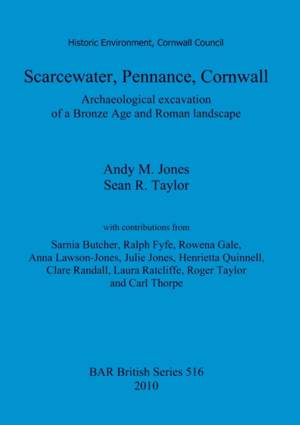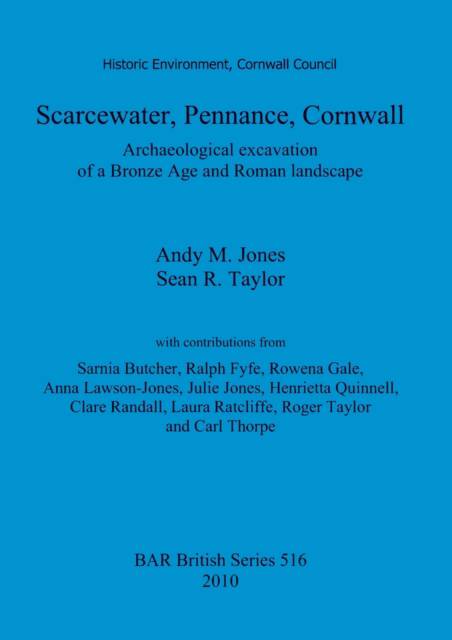
- Afhalen na 1 uur in een winkel met voorraad
- Gratis thuislevering in België vanaf € 30
- Ruim aanbod met 7 miljoen producten
- Afhalen na 1 uur in een winkel met voorraad
- Gratis thuislevering in België vanaf € 30
- Ruim aanbod met 7 miljoen producten
Zoeken
Scarcewater, Pennance, Cornwall
Archaeological excavation of a Bronze Age and Roman landscape
Andy M Jones, Sean R Taylor
€ 119,45
+ 238 punten
Omschrijving
Following an archaeological assessment, geophysical survey, and evaluation trenching, a large-scale excavation covering some 30 hectares was undertaken by the Historic Environment Service projects team of Cornwall County Council at the site of Imerys Minerals Ltd's Scarcewater tip, St Stephen-in-Brannel in 2004. The archaeological excavations were focused upon the investigation of three sunken-floored roundhouses of Middle Bronze Age date, together with a range of Bronze Age pits and timber structures, aLate Bronze Age roundhouse and palisade enclosure and pits, a Middle Iron Age 'cairn', and Romano-British settlement and funerary activity. The analyses of the information from the excavated sites has provided the opportunity to investigate shifting settlement foci and changes to Bronze Age roundhouse architecture over a period between 1500 and 1000 cal BC, and to examine the relationships between settlement-related and ceremonial activity in the middle of the second millennium cal BC. Importantly, the project has also allowed a study to be made of sites rarely identified in Cornwall. These include structures of the first millennium cal BC and Romano-British activity that was associated with both unenclosed settlement and funerary practice. Overall, the project has enabled relationships, changing patterns of settlement, architectural traditions, and spatial attitudes between the living and the dead to be considered in several key periods.
Specificaties
Betrokkenen
- Auteur(s):
- Uitgeverij:
Inhoud
- Aantal bladzijden:
- 205
- Taal:
- Engels
- Reeks:
- Reeksnummer:
- nr. 516
Eigenschappen
- Productcode (EAN):
- 9781407306452
- Verschijningsdatum:
- 15/08/2010
- Uitvoering:
- Paperback
- Formaat:
- Trade paperback (VS)
- Afmetingen:
- 210 mm x 297 mm
- Gewicht:
- 707 g

Alleen bij Standaard Boekhandel
+ 238 punten op je klantenkaart van Standaard Boekhandel
Beoordelingen
We publiceren alleen reviews die voldoen aan de voorwaarden voor reviews. Bekijk onze voorwaarden voor reviews.








